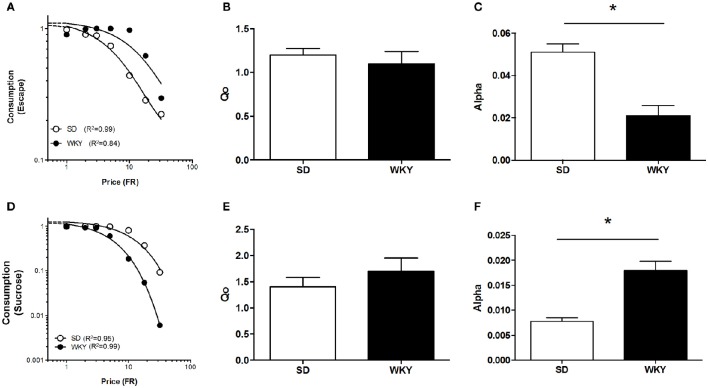Figure 5.
Differential motivation for positive and negative reinforcement in anxiety vulnerable WKY rats. The demand for shock cessation and sucrose were compared between Sprague Dawley (SD) and anxiety vulnerable Wistar Kyoto (WKY) rats. (A) Composite demand curves for shock cessation were generated from the exponential demand equation for group means of SD (n = 8) and WKY (n = 6) rats. The symbols represent successful escapes made for a given FR and lines represent best fit demand curves (open circles = SD rats, closed circles = WKY rats). (B) Q0 did not differ between SD and WKY rats. (C) WKY rats were more motivated to escape footshock (smaller α) compared to SD rats. (D) Composite demand curves for sucrose were generated from the exponential demand equation for group means of SD (n = 11) and WKY rats (n = 11). Symbols represent successful trials in which sucrose was obtained at a given FR and lines represent best fit demand curves (open circles = SD rats, closed circles = WKY rats). (E) Q0 did not differ between SD and WKY rats. (F) WKY rats were less motivated to obtain sucrose (greater α) than SD rats. *p < 0.05.

